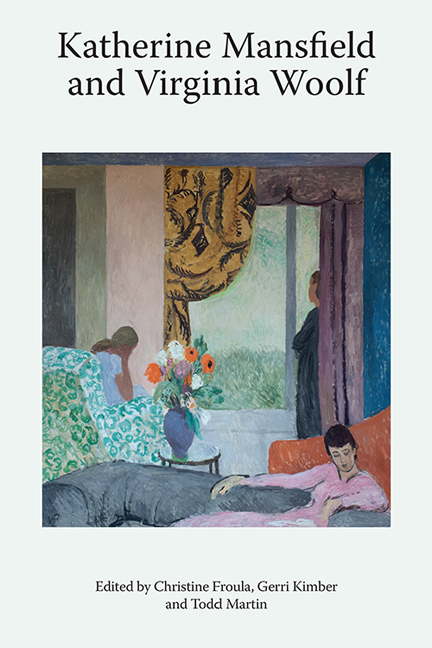The Fly and the Displaced Self: Affective Potential in the Epiphanic Moments of Mansfield, Woolf and Lawrence
Published online by Cambridge University Press: 07 May 2021
Summary
The literary criticism of Christina Alt, Bonnie Kime Scott, Christine Froula and Derek Ryan, to name a few, has shown how attention to the nonhuman provides insight into the epistemological changes in science, ethics and aesthetics in the modernist period. But why study flies? Virginia Woolf, Katherine Mansfield and D. H. Lawrence used a veritable zootopia in their diaries, letters, essays and fiction, but a fly is not an obvious choice for a spirit animal or sobriquet. Nonetheless, each writer reflects on the relationship between self and other by portraying protagonists’ interaction with or appropriation of the identity of an insect.
The portrayal of a fly is not new, but its use by Woolf, Mansfield and Lawrence is singular for its decentring of experience and for derailing the expected narrative frame, thus making possible an experience or emotion that has eluded or been contained by generic approaches. For example, two notable fly appearances include Emily Dickinson, whose poetry anticipated modernist experiment, particularly in ‘I heard a Fly buzz – when I died’, and high modernist James Joyce's ‘Lestrygonians’ episode in Ulysses, ‘Stuck on the pane two flies buzzed, stuck.’ Their words, which have an extraordinary emotional punch, seem entirely at odds with their (dis)orienting focus – a fly. How could – or rather why should – the buzzing of a fly move the mind to a still point, contemplating mortality, love, loss and desire? Both Dickinson and Joycedepict protagonists who first register a fly, an utterly other and irrelevant presence, during a moment the reader knows is an existential and emotional crisis – for Dickinson's poet the deathbed, for Joyce's Leopold Bloom the fact that his wife will that afternoon be in bed with another man. Contrapuntally, both moments conclude by repeating with a variation the fact of the fly so that the protagonists’ suppressed knowledge is revealed. The fly opens a defamiliarised perspective for the subject – indeed makes the subject his or her own object of observation; that is, the protagonists observe themselves as they might an insect. Then the fly reorients them to the mundane.
- Type
- Chapter
- Information
- Katherine Mansfield and Virginia Woolf , pp. 102 - 116Publisher: Edinburgh University PressPrint publication year: 2018



